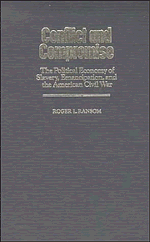7 - The Impact of Emancipation
Published online by Cambridge University Press: 05 June 2012
Summary
Section I: Neither slavery nor involuntary servitude, except as a punishment for crime whereof the party shall have been duly convicted, shall exist within the United States, or any place subject to their jurisdiction. Section 2: Congress shall have power to enforce this article by appropriate legislation.
Constitution of the United States of America, Amendments, Article 13, Ratified December 18, 1865The words were terse and to the point, echoing those of Thomas Jefferson as he had struggled to ban slavery from the Northwest Territory. In 1865 the ban was applied not just to a few states or territories, but to all of the United States. The Thirteenth Amendment demonstrated that at least one great question had been resolved by four years of war: Slavery was abolished, and four million black slaves were freed.
What was next? In the summer of 1862, the editor of a Boston newspaper had commented that the “great phenomenon of the year is the terrible intensity” with which the support for emancipation had swept through New England. “A year ago,” he continued, “men might have faltered of proceeding to this extremity, [but now] they are in great measure prepared for it.” The editor's observation was overly sanguine. Even if he was correct that northern men might have prepared themselves to accept the idea of emancipation (and we have seen that this was by no means obvious elsewhere in the United States at this time), three years later they were still not prepared to deal with the reality of its consequences.
- Type
- Chapter
- Information
- Conflict and CompromiseThe Political Economy of Slavery, Emancipation and the American Civil War, pp. 216 - 252Publisher: Cambridge University PressPrint publication year: 1989



